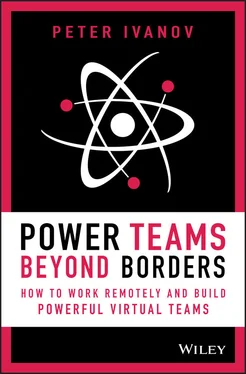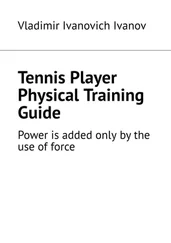When people explain their lifelines to the rest of the team, you'll learn what makes their heart sing. This sows the seeds for those all‐important interpersonal relationships to grow and blossom.
I also tell everyone to bring one photo that they identify with and to share this with the rest of their team. You know the old saying, ‘A picture is worth 1,000 words’? It's true.
More and more companies are creating virtual teams who are based all over the world. It allows them to access the best talent out there. But when you're not able to meet face to face, you need to find other ways of building those vital personal relationships and this exercise is a brilliant way to do that.
If you work with a very big team, you can still complete the lifeline exercise. To make sure it doesn't last too long, and that everyone is able to share something about themselves, I have a fast‐paced format that you can use instead. Ask everyone to answer the following four questions:
1 Do you have siblings? If so, how many and are they older or younger than you?
2 What hobby were you most passionate about as a child?
3 What are you most proud of?
4 What else should other people know about you?
The aim with these four questions is to provide a small amount of information that people can relate to. The answers people give will spark further conversations, and that's the whole point of this exercise. You can also start to build up a picture of someone based on their answers to these questions.
For example, if they're the oldest sibling in a family they may have taken on a leadership role early in their lives. As the youngest in a family, they may be competitive because they've been trying to keep up with their older siblings. Middle children are often considered to be adaptable, while only children might not be used to sharing.
The first two questions should be easy for anyone to answer and are like a warm‐up. The third question is likely to be the one that people need to give the most thought to. And with the fourth question, I'd encourage people to share something exotic, something really unique. These last two questions deliberately encourage people to be vulnerable, to show that less polished side of themselves.
I'll share my answers to these questions so that you can get to know me a little:
1 I have an older brother who lives in Australia (I live in Hamburg, Germany), and he's six years older than me.
2 I used to draw pictures of horses. Usually these were galloping horses being ridden by Native Americans.
3 I'm most proud of my five daughters; they are the apples of my eye.
4 The other thing you should know about me is that I like to throw things over long distances. I was actually the World Champion discus thrower at the competition in Auckland in 2017, and I also took home a bronze medal in the men's over‐45 age group javelin competition.
The Importance of Empowerment
During my 20 years in this industry I've led many virtual teams, some of which are spread across different continents and time zones. One of the largest was a European project delivery team that comprised 30 project managers. I have also worked as head of IT for Eastern Europe, the Middle East and Africa, which is not only a huge geographical area but one that can often have poor infrastructure.
Despite all of my experience of managing large global teams, there's one team that I still struggle to manage: my five daughters. However, I have learned lessons about management style from my interactions with them that are transferable to the world of business.
What kind of lessons have I learned from my family that might be applicable in virtual teams? Firstly, when there is a conflict in a virtual team it is often highly charged. Many managers, myself included in the early years, can be guilty of trying to deal with conflict within a virtual team by sending an email. Maybe you send an email and copy a lot of people, which makes the situation worse. Not facing the problem properly creates more problems, but in a virtual team setting it can be easy to hide behind technology. When you send emails like this, you undermine trust and team spirit. I urge you to avoid taking this path.
Start by calling a meeting with the person or people who have contributed to the conflict. Encourage a debate about the situation. Don't set out your opinion upfront, but instead get your team members to share their opinions and suggest solutions. If you do this early and encourage healthy debate, you will save a lot of time and effort further along.
While you're encouraging this debate, strive to find the solution where people choose what they do. You're creating empowerment. When you empower your team in this way, they'll be more committed to the solution you agree on.
If there is one leadership secret I can share with you that I've learned from leading a house of six women, it's not to underestimate the power of praise. So praise, praise and then praise some more.
Praise the result, if there's a result. Praise a sub‐milestone that someone achieves. Even if they haven't achieved anything, praise positive behaviour. If you can't see anything immediately that you can praise, look harder. There will be something there and this encouragement is the way to start improving performance, even from a distance.
The following are some questions for you to consider at this stage. They're self‐coaching questions and I invite you to write down your answers before continuing with the rest of this book.
1 Do you know your virtual team's personal interests, passions and strengths?
2 How can the unique personality of each team member find expression in the team?
3 How do you sustain interpersonal relationships over time and build on them for team success?
In the office, time seems to stand still as Adam waits for his 10.30 a.m. call with Kaito. Eventually, it's time to connect. He dials into the Zoom meeting and waits for Kaito to join him. ‘Adam, hi! It's so good to see you. How are you?’ Adam breaks into a broad grin. ‘I'm great thanks. It's great to see you too. Look, Kaito, things have changed for me recently and I've decided I want to make a go of it in the renewable energy space.’ He pauses, waiting for a reaction. Kaito smiles, then laughs. ‘That's fantastic! What are you thinking about?’ ‘Well, for a start I'd really love you to be involved…’
The half hour whizzes past as Adam and Kaito talk back and forth about all the options in the sector. A plan is beginning to fall into place, although Adam is in favour of wind energy following his talk with Georgia and given what he's seen happening off the Norfolk coast, while Kaito prefers the idea of solar. Both of them are very passionate about their preferred options, and neither is prepared to back down.
After half an hour of going round in what feels like circles, with Adam and Kaito reiterating their respective preferences for wind or solar, Adam is getting tired and frustrated. He knows he needs to put a stop to the conversation.
He interjects, ‘Kaito, look, I hear what you're saying but I really think that wind is the direction we should go in. I'll do some research on the solar projects you're talking about, but I want to start with wind energy and build from there.’
Kaito's expression changes ever so slightly. Adam thinks he looks slightly crestfallen. What Adam can't see is that Kaito, who has been making notes on a pad next to his laptop, is scribbling hard on the pad, scoring deep, dark lines into the crisp white paper.
‘Right, well, I guess I'll wait to hear from you then,’ Kaito says abruptly.
Adam seems unaware of the note of frustration running through Kaito's voice. ‘Great,’ he says, ‘I'll be in touch later this week.’
Читать дальше












